Abstract
Water-contact observations were carried out on a population exposed to Schistosoma haematobium in a village situated on a man-made lake, Lake Volta, Ghana.
The observations were made over a period of 12 months prior to the introduction of control measures. A multiple regression analysis was performed on the results of observations on 132 individuals, with egg output as the dependent variable and various types of water-contact activity, as well as age and sex, as independent variables. In the analysis, specific activities, notably water-contact for domestic purposes and activities associated with fishermen's canoes, were found to be significantly related to schistosomiasis. Age was less important than degree of exposure as a contributory factor to variations in infection rates: the reduced intensity of infection of S. haematobium in the older age groups could be mainly due to a lower level of exposure to the cercarial population.
Full text
PDF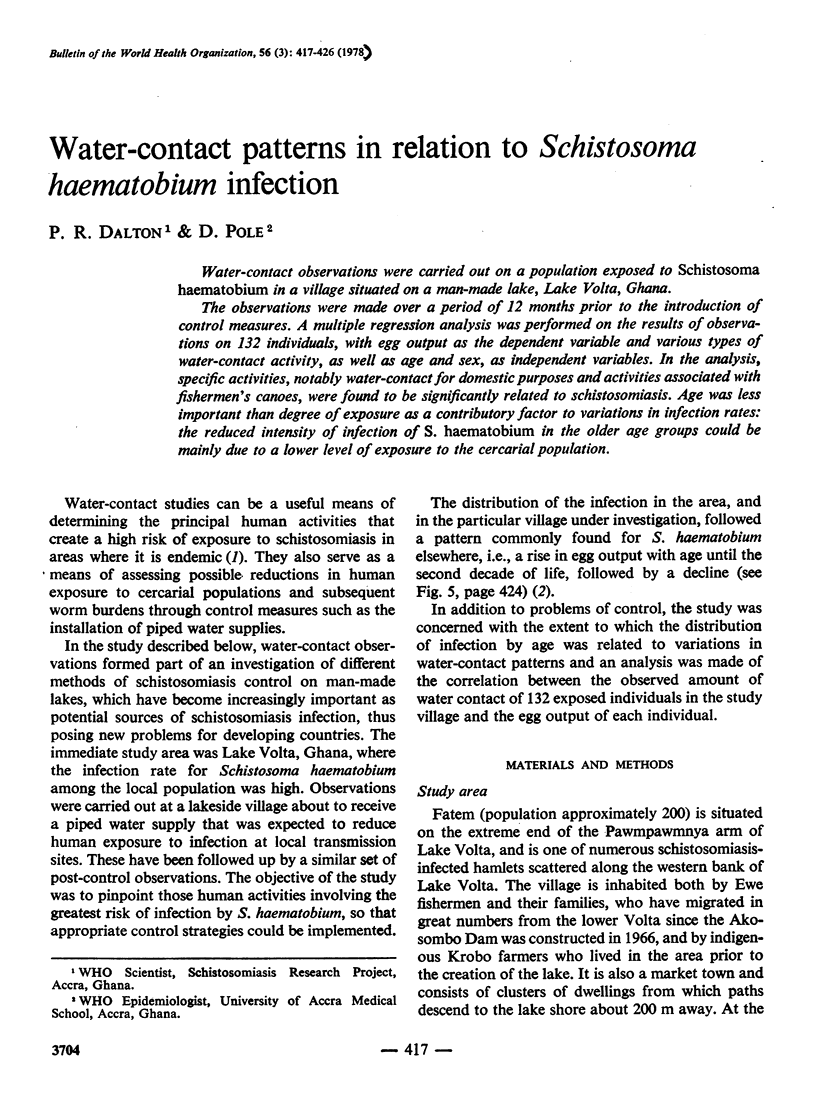
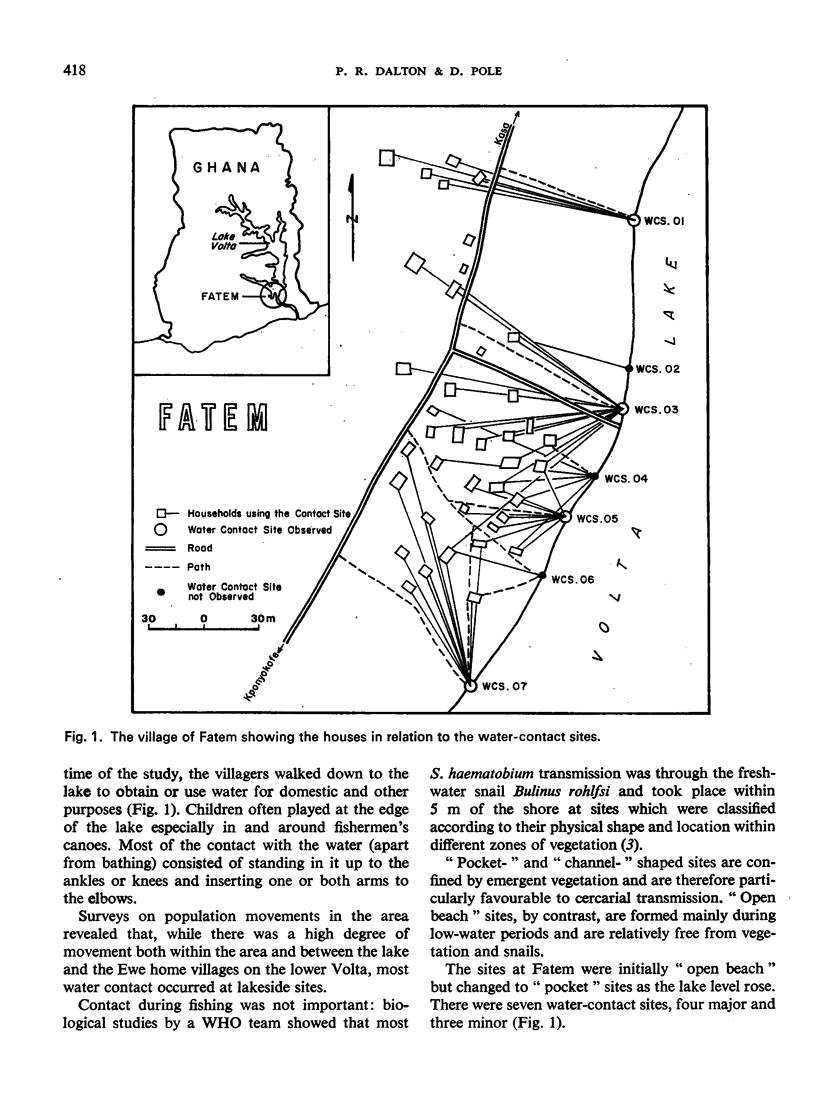
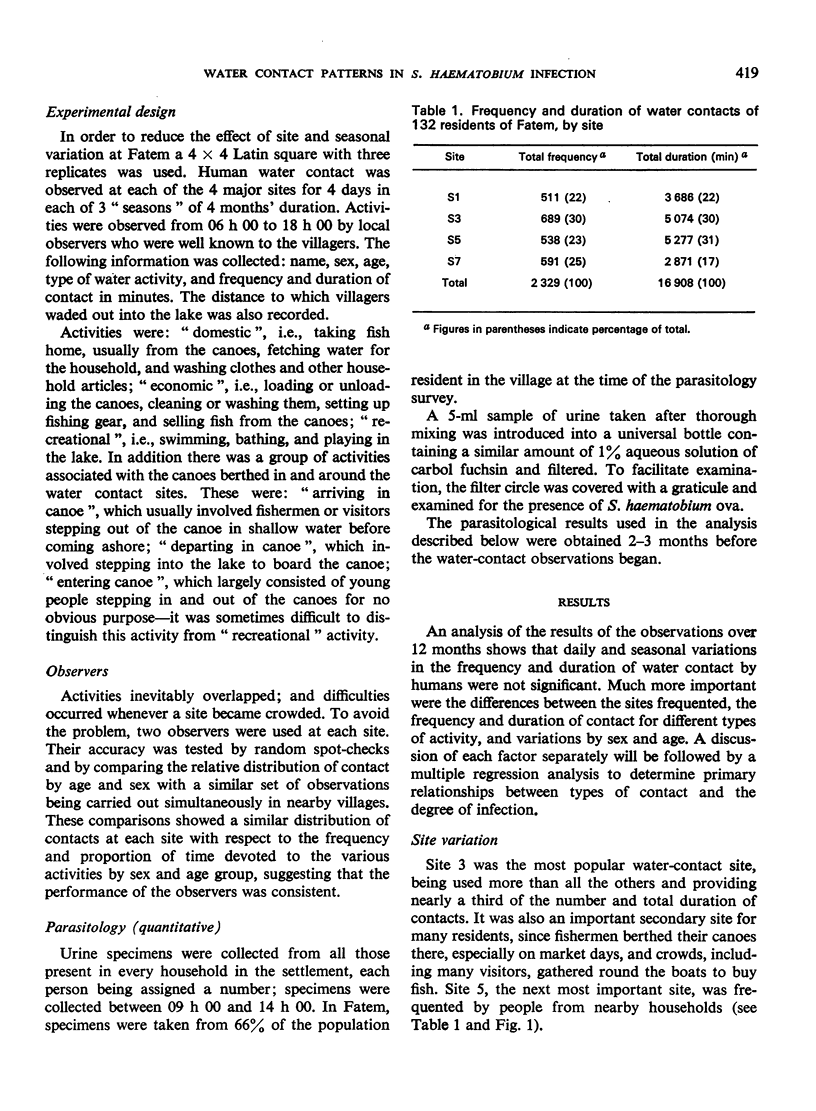
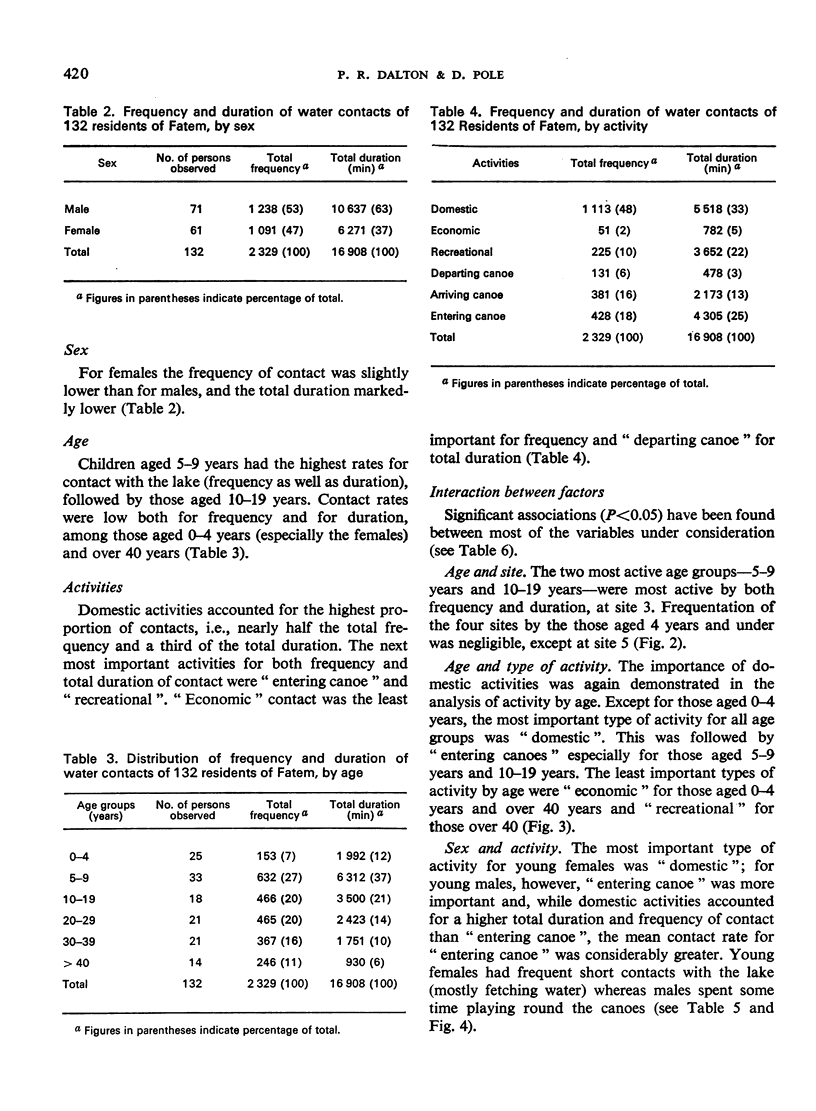
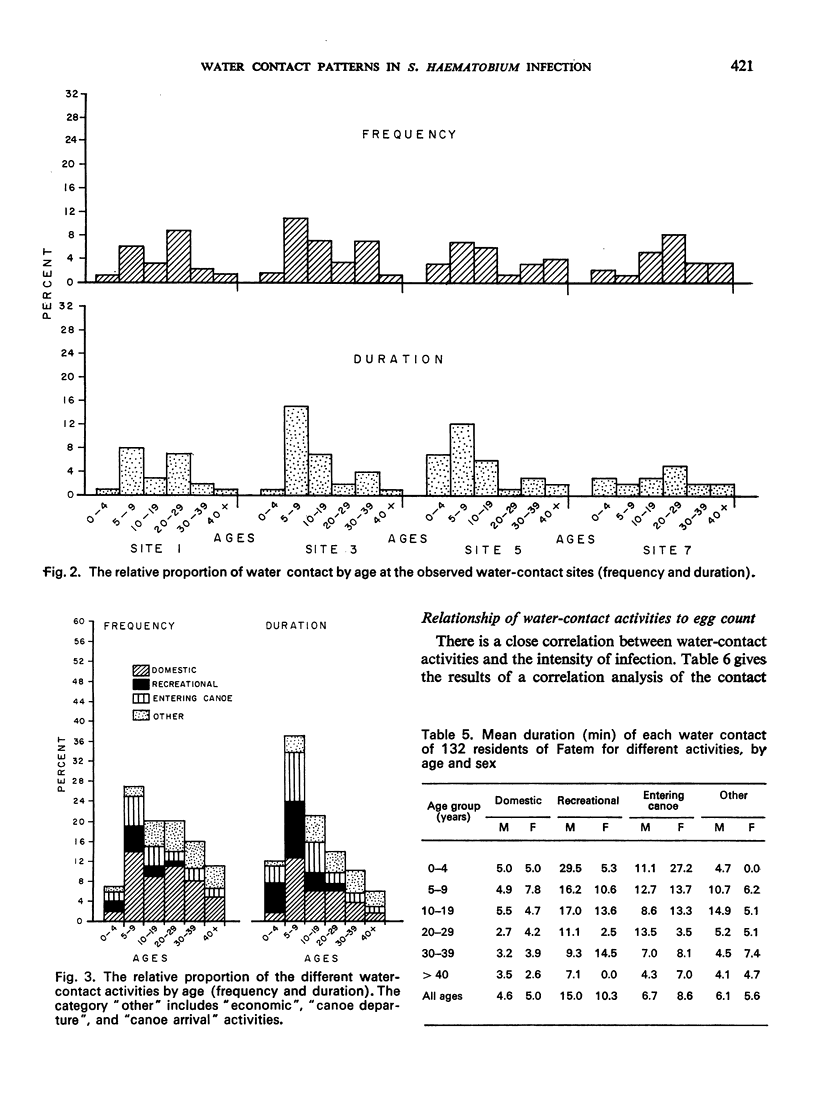
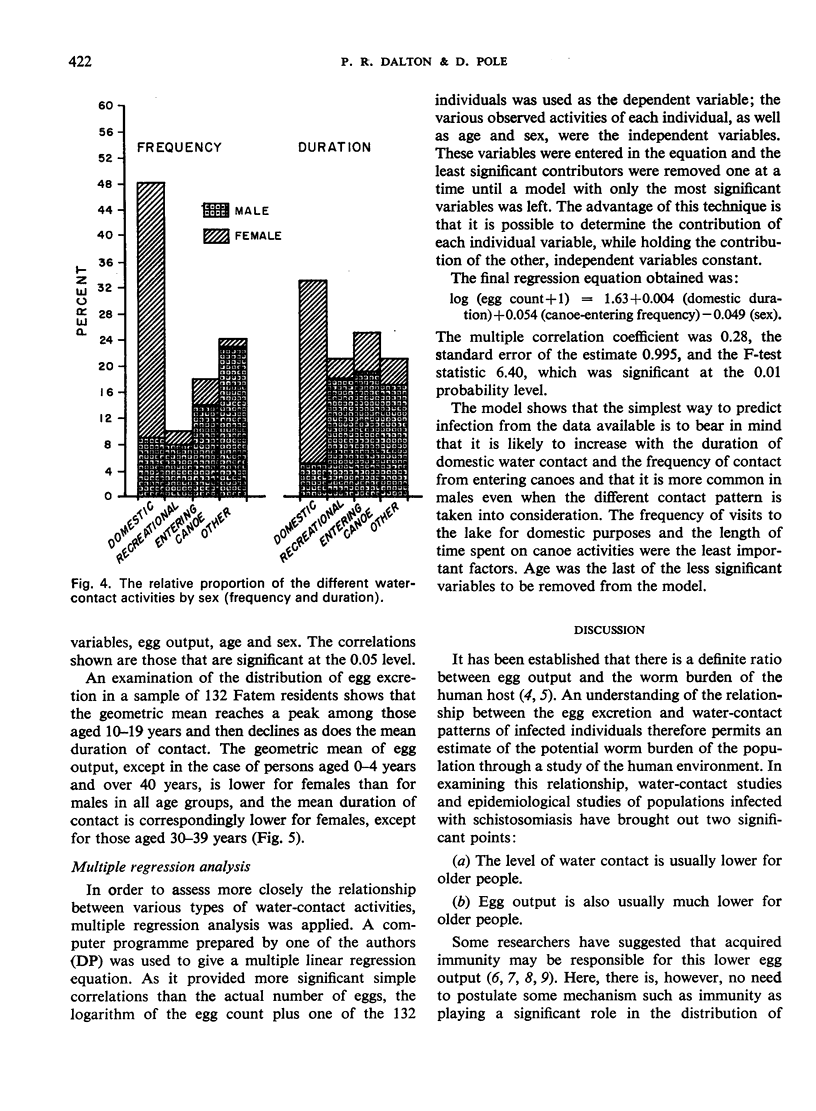
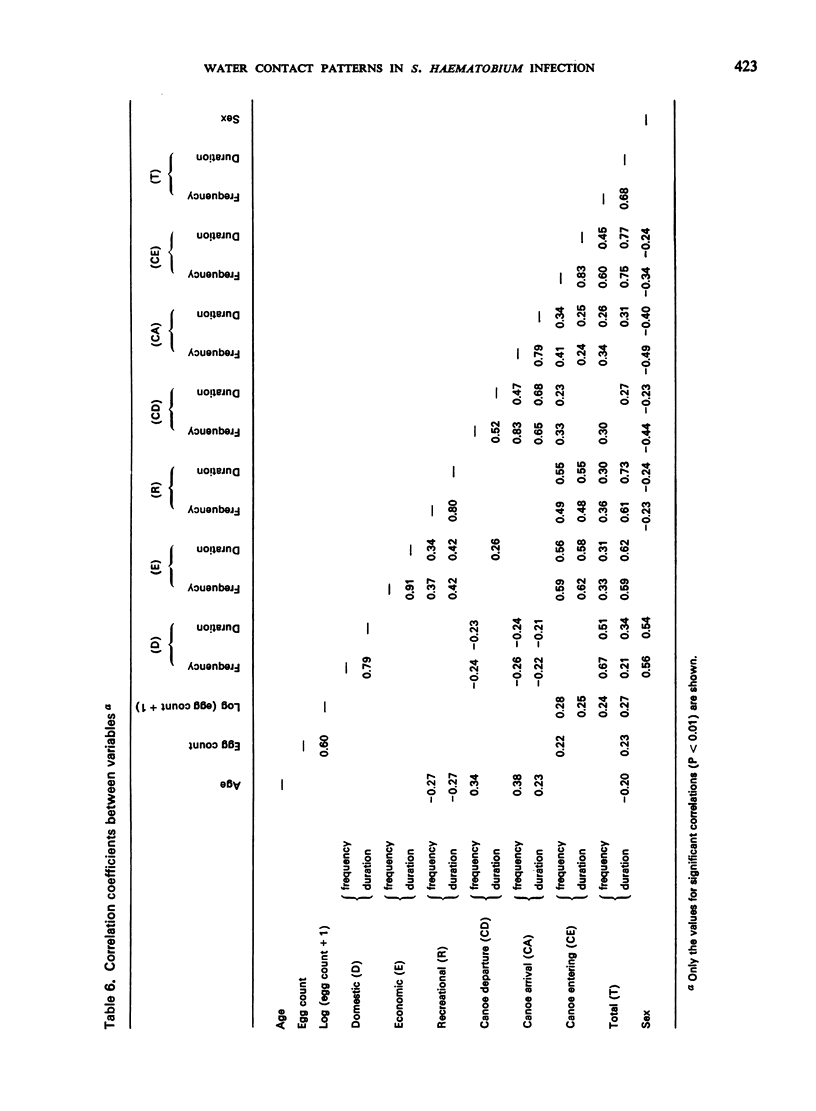
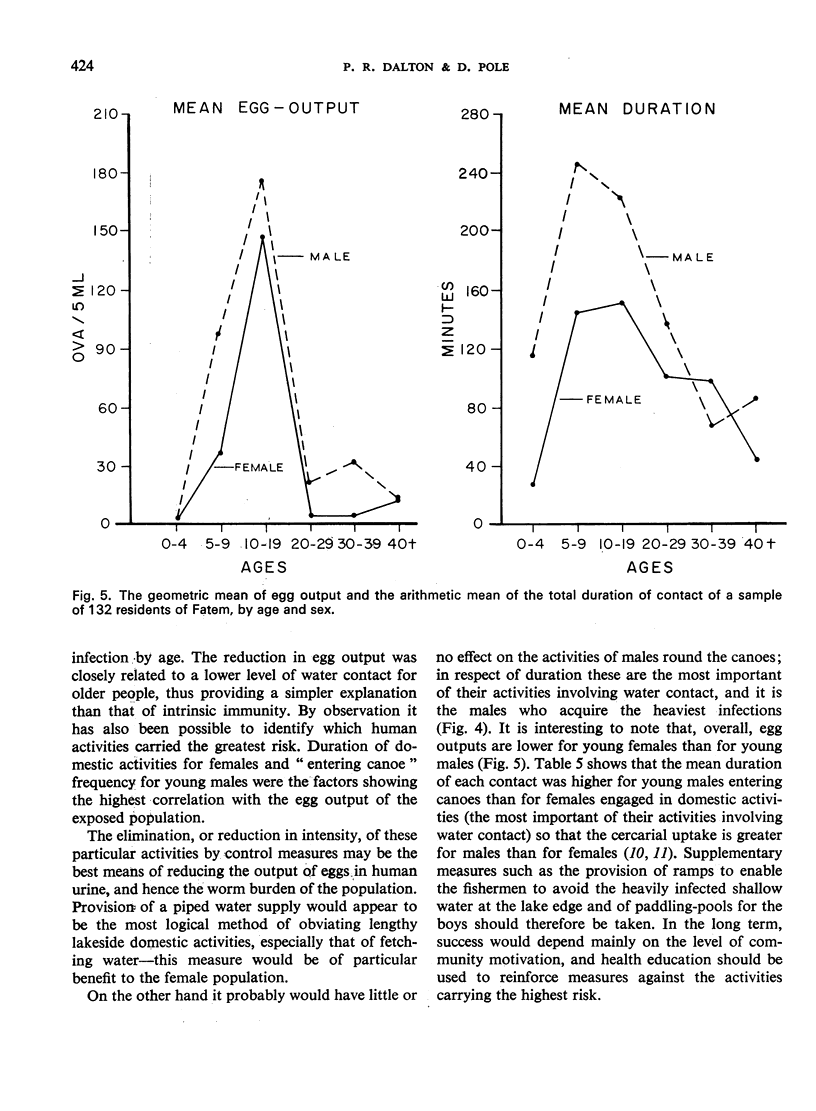
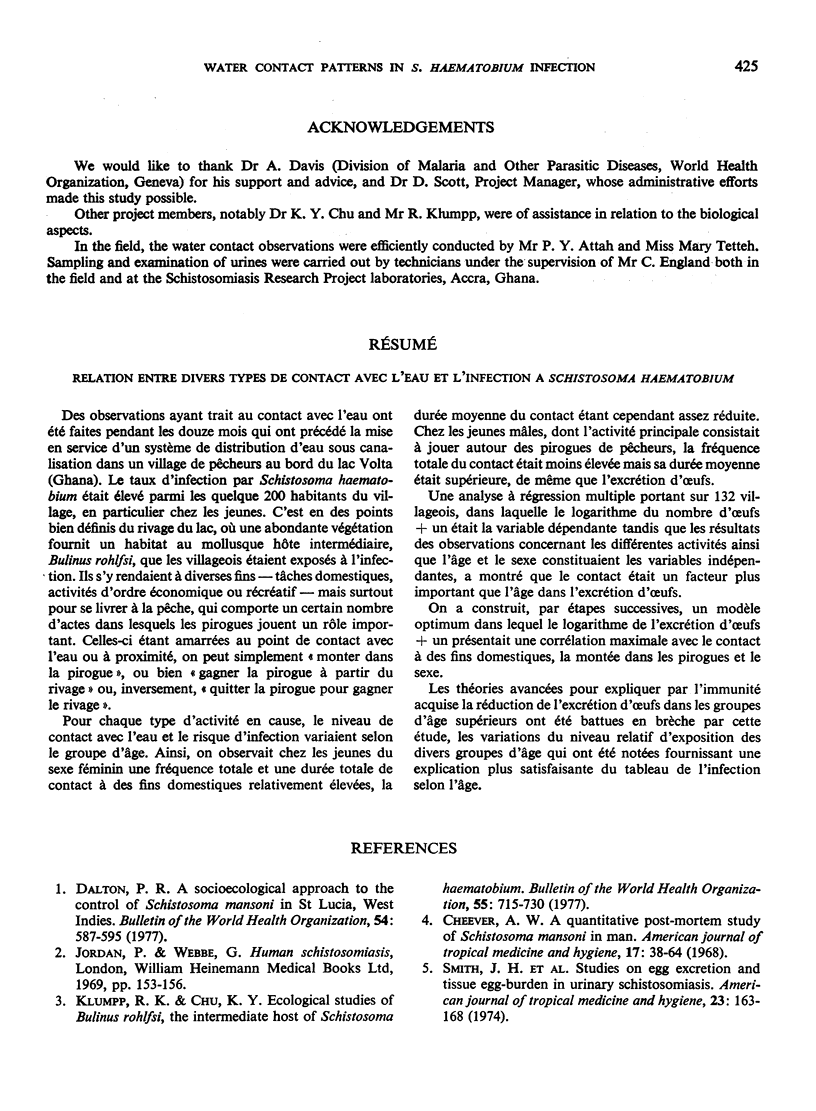
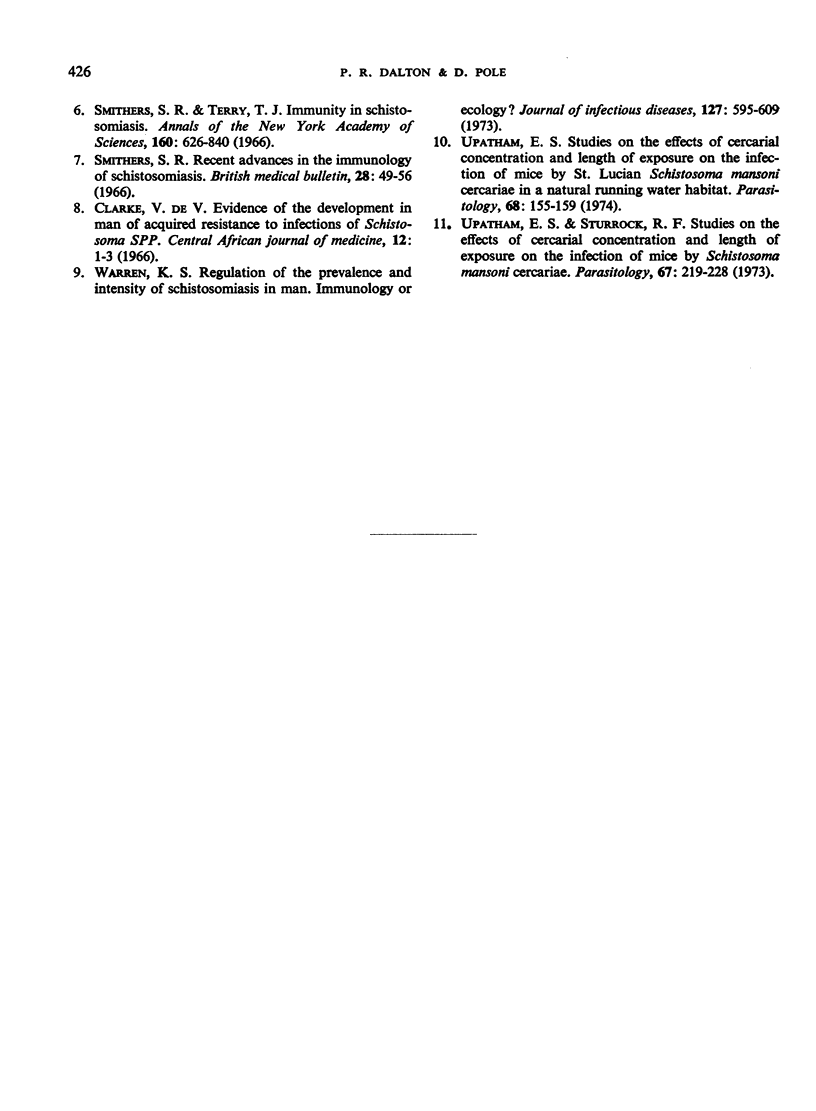
Selected References
These references are in PubMed. This may not be the complete list of references from this article.
- Dalton P. R. A socioecological approach to the control of Schistosoma mansoni in St Lucia. Bull World Health Organ. 1976;54(5):587–595. [PMC free article] [PubMed] [Google Scholar]
- Klumpp R. K., Chu K. Y. Ecological studies of Bulinus rohlfsi, the intermediate host of Schistosoma haematobium in the Volta Lake. Bull World Health Organ. 1977;55(6):715–730. [PMC free article] [PubMed] [Google Scholar]
- Smith J. H., Torky H., Mansour N., Cheever A. W. Studies on egg excretion and tissue egg burden in urinary schistosomiasis. Am J Trop Med Hyg. 1974 Mar;23(2):163–168. doi: 10.4269/ajtmh.1974.23.163. [DOI] [PubMed] [Google Scholar]
- Upatham E. S. Studies on the effects of cercarial concentration and length of exposure on the infection of mice by St Lucian Schistosoma mansoni cercariae in a natural running-water habitat. Parasitology. 1974 Apr;68(2):155–159. [PubMed] [Google Scholar]
- Upatham E. S., Sturrock R. F. Studies on the effects of cercarial concentration and length of exposure on the infection of mice by Schistosoma mansoni. Parasitology. 1973 Oct;67(2):219–228. doi: 10.1017/s0031182000046436. [DOI] [PubMed] [Google Scholar]
- Warren K. S. Regulation of the prevalence and intensity of schistosomiasis in man: immunology or ecology? J Infect Dis. 1973 May;127(5):595–609. doi: 10.1093/infdis/127.5.595. [DOI] [PubMed] [Google Scholar]


